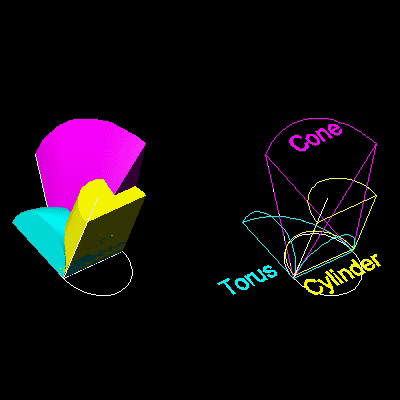
The first solution was given by
Archytas of Tarentum (circa 428 BC-350 BC)
.
The remarkable thing about this fact is his solution is the intersection of three surfaces of revolution,when most of his contemporary
mathematicians were dealing only with the 2D , plane geometry.
In historical perspective, he lived long before
Euclid of Alexandria (circa 325 BC-265 BC)
wrote his famous book "The Elements".
In the drawing below, the objective is to find length (AC/AB)1/3 for given lengths of AB & AC.
These are the steps to find such line.
(1) Three surfaces of revolution meets at point P.
(2) Draw a line PM perpendicular to plane ABC.
(3) Point M will be on the circle ABC.
(4) Then AC/AP = AP/AM = AM/AB
(5) Therefore AC/AB = (AM/AB)3
if AB = 1, and AC = 2, then AM = (2)1/3
For the geometrical arguments regarding statements (3) & (4),refer to the ref.1 by Heath,
Here let us use analytical geometry to derive this.
Analytically three surfaces of revolution can be written as follows:
(1) the right cone : x2 + y2 + z2 = (a/b)2x2
(2) the cylinder : x2 + y2 = a x
(3) the torus : x2 + y2 + z2 = a {x2 + y2}1/2
Combining (1) & (2), we have x2 + y2 + z2 = {x2 + y2}2 / b2
From this and (3), we obtain
a / {x2 + y2 + z2}1/2 = {x2 + y2 + z2}1/2 / {x2 + y2}1/2 = {x2 + y2}1/2 / b
or, AC / AP = AP / AM = AM / AB

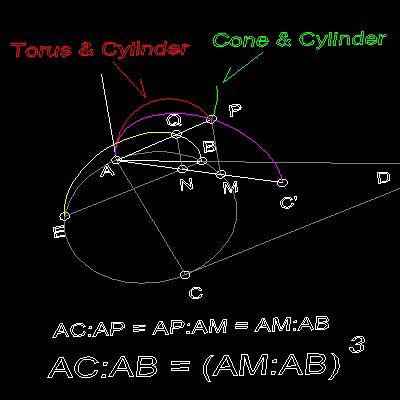
********* Archytas_Delian_model.dwg *********
******** Archytas_Delian_result.dwg ********
To create this drawing :
Load Archytas_Delian.lsp (load "Archytas_Delian")
Then from command line, type Archytas_delian_model for the left
Similarly from command line, type Archytas_delian for the right.
Numerical Check of the result
Let us check the numerical value of line length AM,which is {x2 + y2}1/2.
Substituting (2) into (3), we obtain
x2 + y2 + z2 = a ( a x )1/2 ------------------------- (4)
Equating the right hand side of (1) and (4), x can now be determined as x = {b4/ a }1/3 ---------- (5)
Substituting (5) into the right hand side of (2), we obtain
x2 + y2 = a x = {a2 b4}1/3
Therefore, AM = {x2 + y2}1/2 = {ab2}1/3
The value for y & z can also be computed from the following result.
y2 = {a2 b4}1/3 - {b8 / a2}1/3
z2 = {a4 b2}1/3 - {a2 b4}1/3
If we let a = AC = 2, and b = AB = 1, then
AM = (2)1/3 and AP = (4)1/3
and x = (1/2)1/3 ; y2 = (4)1/3 - (1/4)1/3 ; z2 = (16)1/3 - (4)1/3
or, x = 0.7937005 , y = 0.9784889 , z = 0.9656298 , which is the 3-D coordinate value of the point "P".
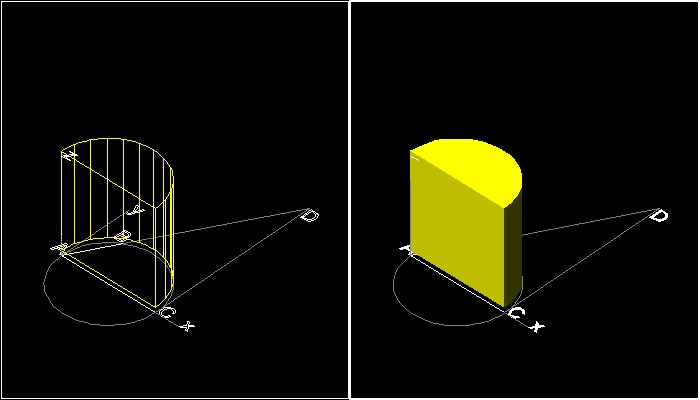
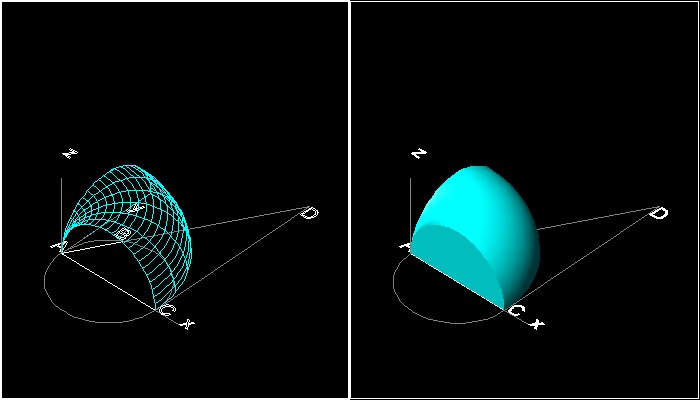
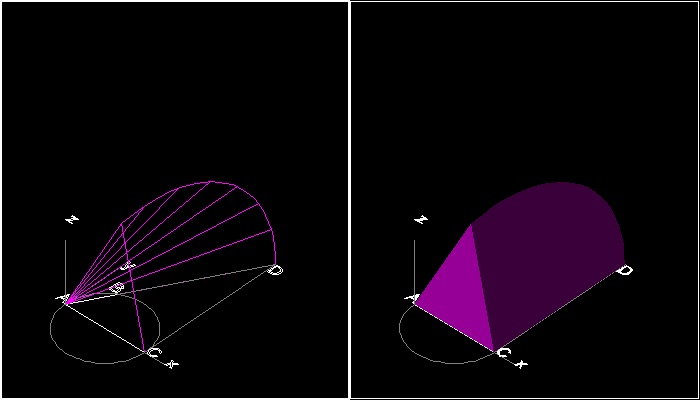 .
.
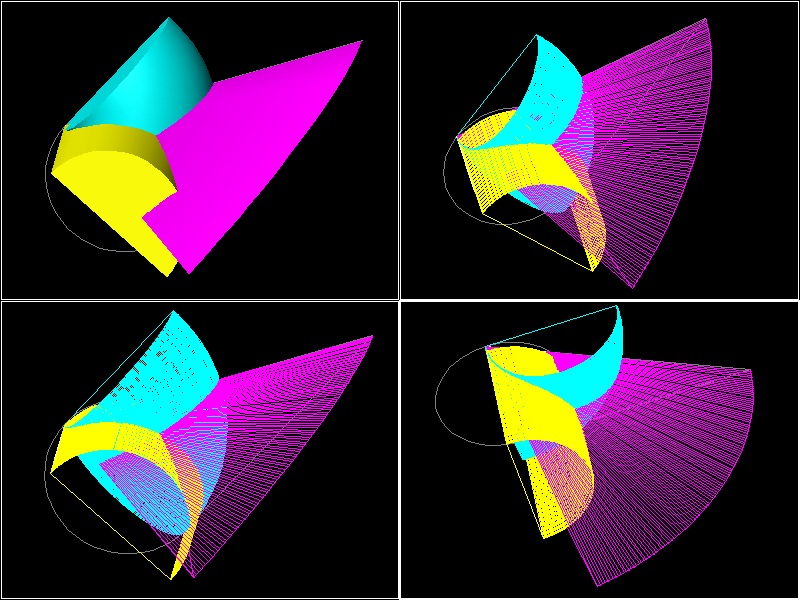
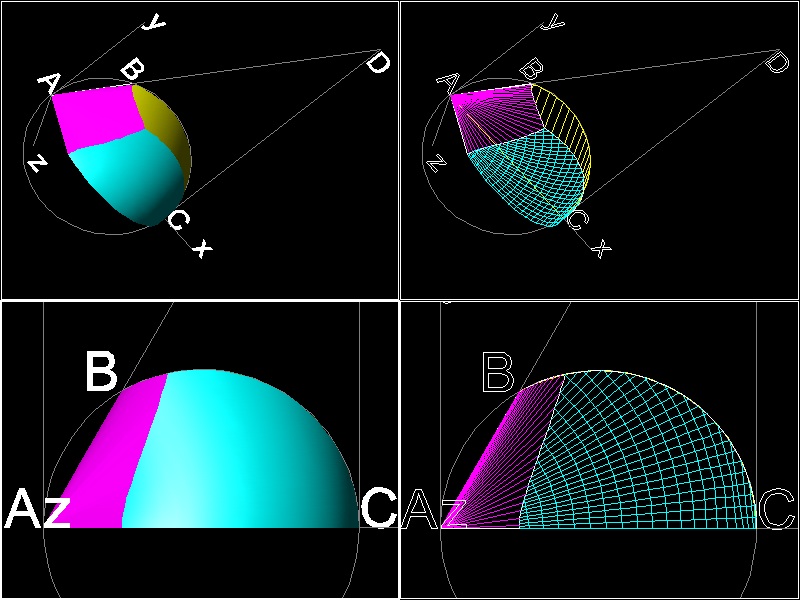
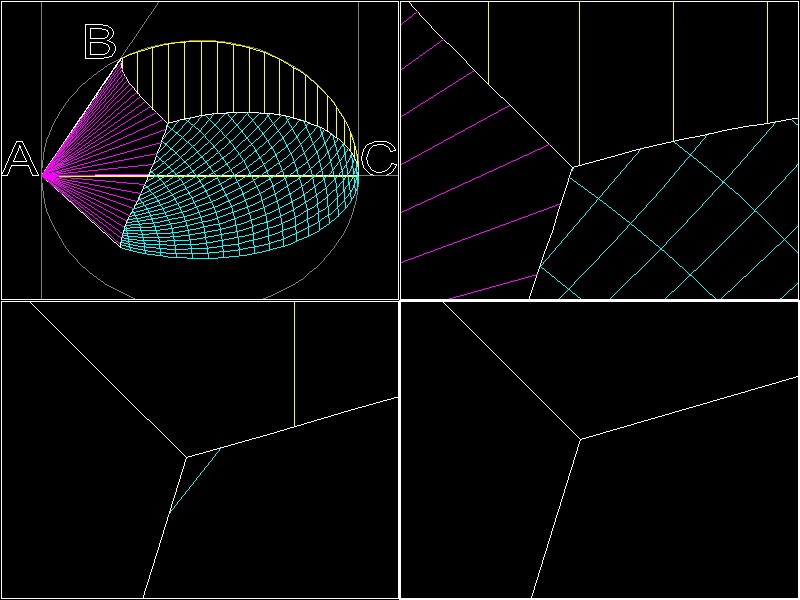
Explode the surface objects. Then the boundary lines become independent lines.
Locate the point "P" using "END" osnap command.
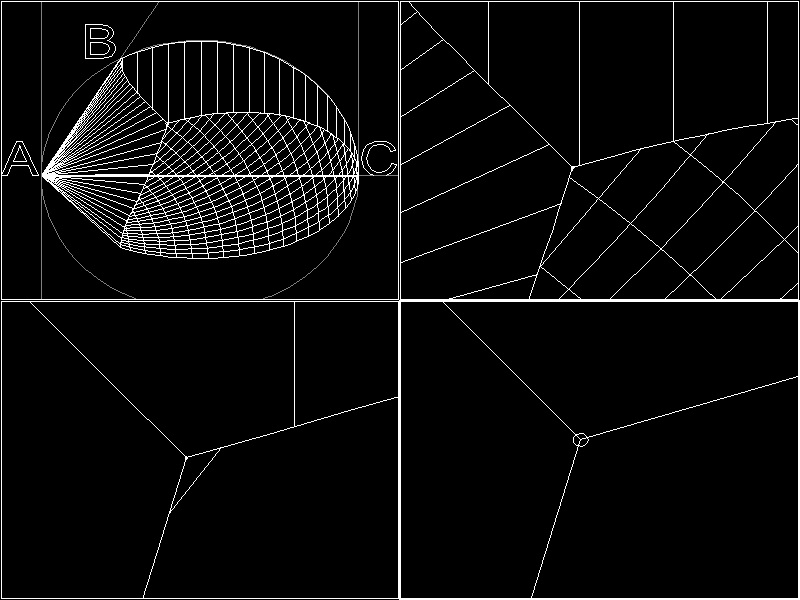
********************************* explode_find_point_p.dwg *********************************
Using LIST command, the following value will be displayed on the TEXT screen.
POINT Layer: "0"
Space: Model space
Handle = 663
at point, X=0.79370053 Y=0.97848890 Z=0.96562987
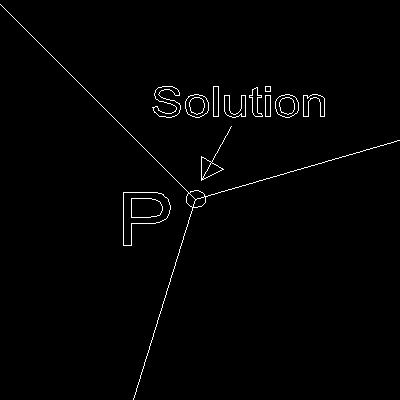
********** point_of_intersection.dwg **********
1. Heath, Sir L. Thomas:"A History of Greek Mathematics", VOL. 1, From Thales to Euclid., Dover.
All questions/suggestions should be sent to Takaya Iwamoto
Last Updated Nov 22, 2006
Copyright 2006 Takaya Iwamoto All rights reserved.